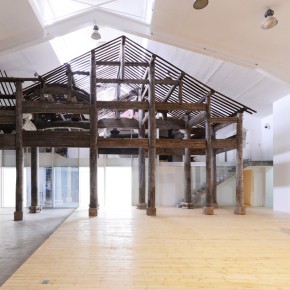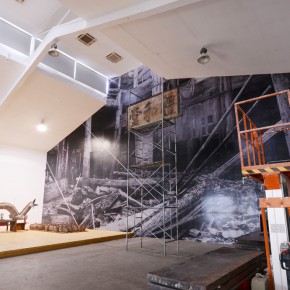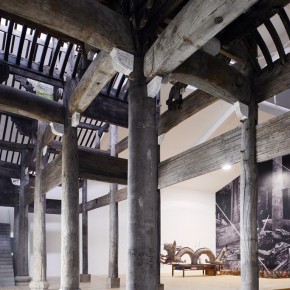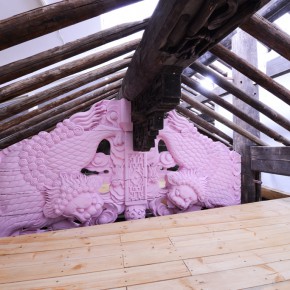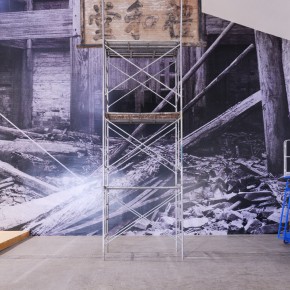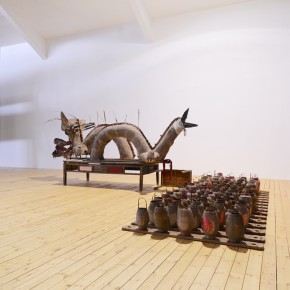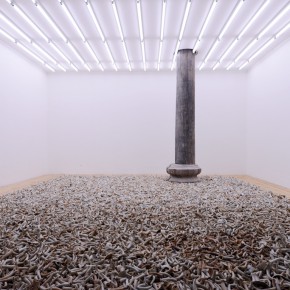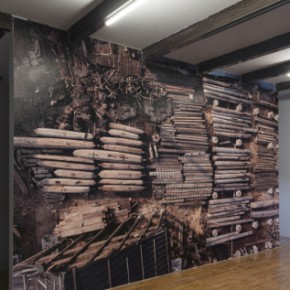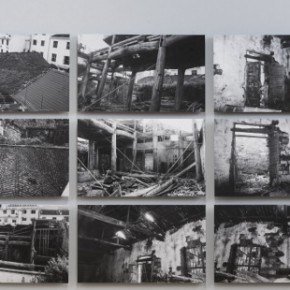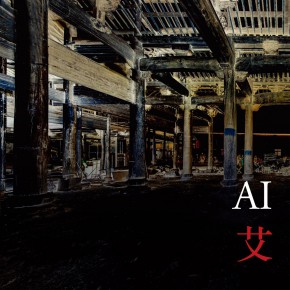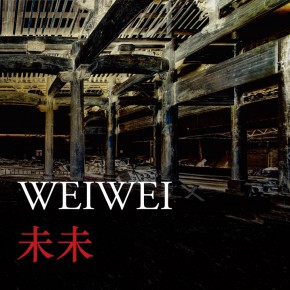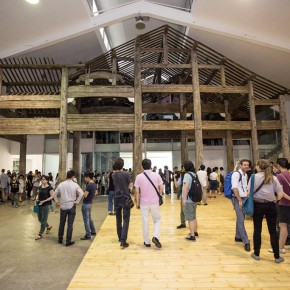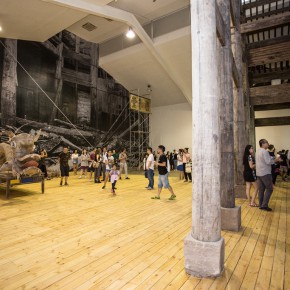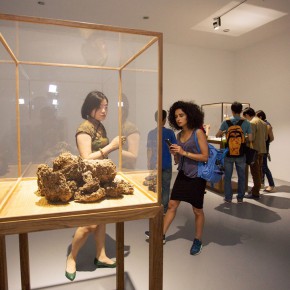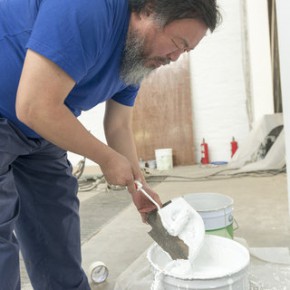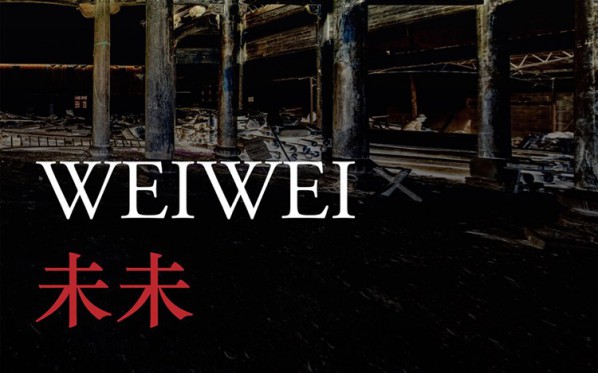
For the first time in his life, the famous Chinese artist Ai Weiwei designs and realizes a solo exhibition in China, following the entire development of the project from conception to realization in situ. His exhibition at the exhibition space of Galleria Continua in Beijing represents a new "challenge" faced by the artist through what he defines as a "learning process", an on-going project, which is at the same time a struggle and above all, the organisation of an actual organism.
Wang Jiaci (Wang family ancestral hall) was an ancestral temple of Ming age, dedicated to the cult of Wang Hua, an important prince who was reigning during the 6th century A.D., taken as reference by all future dynasties, from Tang to Qing. For hundreds of years, the ancestral temple was considered a sacred place, destined to host offerings and cult ceremonies for ancestors, as well as a place for holding important social activities or meetings and those concerning the Wang family. Today Wang Jiaci is the hub of Ai Weiwei’s monumental project, an ancient building which was disassembled into more than 1500 pieces and meticulously re-built inside two exhibitive areas: Galleria Continua and Tang Contemporary Art, crossing the wall that divides the two galleries. The peculiarity of this traditional architecture lies in its structure consisting of columns and wooden beams, completely independent and detachable from the walls. This building technique, recently developed also in the West, was used in China over one thousand years ago and is strictly related to the Chinese philosophy and thought.
The choice to bring a predominant installation with imposing structure, cultural importance and aesthetic beauty inside an exhibition and two galleries, aimed at setting conditions of "totality" where the environment, which is no longer physical but also temporal and social, becomes an essential aspect of the work. Thus, visitors become part of the project, and their behaviour forms an inseparable part of it. The visitor, invited to enter the two exhibitive areas at different times, is forced to see the work only partially, without ever being able to view and enjoy the entire architectural structure from a single point. The public is invited to walk inside a "social context" rather than a visual one, a condition in which the architectural object was deprived of its original use, thus acquiring a new shape and meaning. The behaviour of those who live this experience becomes, therefore, the focus of the entire project, and even the work itself. Ai Weiwei focuses, once again, on the importance of human actions within a particular event, not only of artistic, but also of social and public character.
The exhibition conceived for the two galleries represents an ambitious process that exalts the complex nature of the artist and key points around which his art revolves: an obsequious respect for the Chinese tradition combined with the great ability to offer ancient themes in modern key, in addition to constant social and political awareness.
An important area of the exhibition is indeed dedicated to describe this huge process. Documentation and filing are essential activities, which represent the common thread of the entire Ai Weiwei’s research and career. Through documentation, the artist assigns a name and temporal and historical location to objects and people, re-asserting their dignity and value. At the same time, documenting and proposing the material stimulates different reactions in human beings, it stirs their imagination, fears and feelings. The same information can be perceived by each individual in a different way, producing different reactions. Thus, the documenting activity offers a second nature to objects and people, two different realities, two different lives.
A lot has been written about Ai Weiwei’s life, in many different languages – about the early hardship experienced by his family and about how fundamental it was for Ai Weiwei to redeem his father through his work and his practicing of intellectual freedom.
Ai Weiwei asserts the need of an active effort on different fronts, from art, to architecture, literature, to documentation cinema, through to the action on social media and public protests. The various spheres of action aim anyhow at attaining a single and all-inclusive goal: freeing individual expression from any type of imposition to favour reciprocal exchange and sharing among individuals.
The exhibition at the Galleria Continua and Tang Contemporary Art sets out to focus on Ai Weiwei in all his complexity, a man for whom art is a way of living that is inextricably bound up with the authentic circumstances of his time.

About the artist
Ai Weiwei was born in Beijing in 1957. He moved to New York City in 1981 and returned to Beijing in 1993, where he still lives and works.
His works are exhibited all over the world, in monographic exhibitions, including Evidence at the Martin-Gropius-Bau in Berlin, @Large: Ai Weiwei on Alcatraz in San Francisco (2014), the 55th International Art Exhibition La Biennale di Venezia in the German Pavilion in Venice (2013), Ai Weiwei: According to What? at the Hirshhorn Museum in Washington D.C., Interlacing at the Jeu de Paume in Paris (2012), Circle of Animals at Somerset House in London, Ai Weiwei: Absent at the Taipei Fine Arts Museum in Taipei (2011), Ai Weiwei: Sun ower Seeds at the Tate Modern in London (2010), and So Sorry at the Haus der Kunst in Munich, Ai Weiwei: New York Photographs 1983-1993 at ree Shadows Photography Art Centre in Beijing (2009), and Ai Weiwei at the Kunsthalle Bern in Bern (2004).
Past group exhibitions include the 14th International Architecture Exhibition La Biennale di Venezia at the Palazzo Franchetti in Venice, Beyond and Between at the Leeum Samsung Museum of Art in Seoul (2014), Busan Biennale in Busan (2012), the 29th Sao Paulo Biennial in Sao Paolo, documenta 12 in Kassel (2007), the 1st Guangzhou Triennale at the Guangdong Museum of Art, Guangzhou (2002), Fuck O at EastLink Gallery in Shanghai (2000), the second Stars Exhibition at the National Art Museum of China in Beijing (1980), and the 1st Stars Exhibition outside the National Art Museum of China in Beijing (1979).
About the exhibition
Curator: Cui Cancan
Duration: 6th June - 6th September, 2015
Venue: Galleria Continua
Address: Dashanzi Art District 798 #8503, 2 Jiuxianqiao Road, Chaoyang Dst. / 100015 Beijing
Tel: +86 10 59789505
Courtesy of the artist and Galleria Continua, for further information please visit www.galleriacontinua.com.cn or contact Han Xue via hanxue@galleriacontinua.com.cn.


